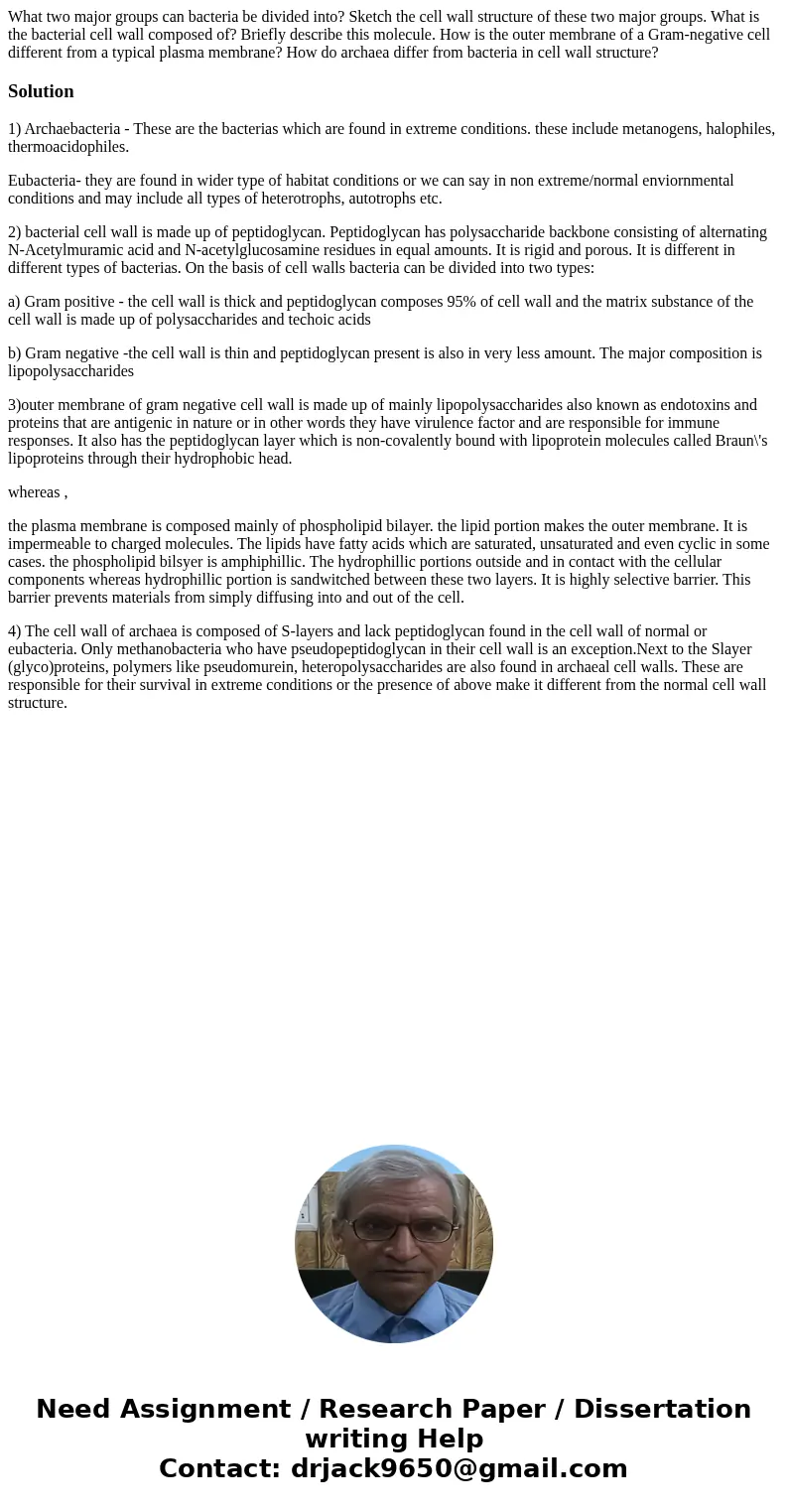What two major groups can bacteria be divided into Sketch th
Solution
1) Archaebacteria - These are the bacterias which are found in extreme conditions. these include metanogens, halophiles, thermoacidophiles.
Eubacteria- they are found in wider type of habitat conditions or we can say in non extreme/normal enviornmental conditions and may include all types of heterotrophs, autotrophs etc.
2) bacterial cell wall is made up of peptidoglycan. Peptidoglycan has polysaccharide backbone consisting of alternating N-Acetylmuramic acid and N-acetylglucosamine residues in equal amounts. It is rigid and porous. It is different in different types of bacterias. On the basis of cell walls bacteria can be divided into two types:
a) Gram positive - the cell wall is thick and peptidoglycan composes 95% of cell wall and the matrix substance of the cell wall is made up of polysaccharides and techoic acids
b) Gram negative -the cell wall is thin and peptidoglycan present is also in very less amount. The major composition is lipopolysaccharides
3)outer membrane of gram negative cell wall is made up of mainly lipopolysaccharides also known as endotoxins and proteins that are antigenic in nature or in other words they have virulence factor and are responsible for immune responses. It also has the peptidoglycan layer which is non-covalently bound with lipoprotein molecules called Braun\'s lipoproteins through their hydrophobic head.
whereas ,
the plasma membrane is composed mainly of phospholipid bilayer. the lipid portion makes the outer membrane. It is impermeable to charged molecules. The lipids have fatty acids which are saturated, unsaturated and even cyclic in some cases. the phospholipid bilsyer is amphiphillic. The hydrophillic portions outside and in contact with the cellular components whereas hydrophillic portion is sandwitched between these two layers. It is highly selective barrier. This barrier prevents materials from simply diffusing into and out of the cell.
4) The cell wall of archaea is composed of S-layers and lack peptidoglycan found in the cell wall of normal or eubacteria. Only methanobacteria who have pseudopeptidoglycan in their cell wall is an exception.Next to the Slayer (glyco)proteins, polymers like pseudomurein, heteropolysaccharides are also found in archaeal cell walls. These are responsible for their survival in extreme conditions or the presence of above make it different from the normal cell wall structure.

 Homework Sourse
Homework Sourse